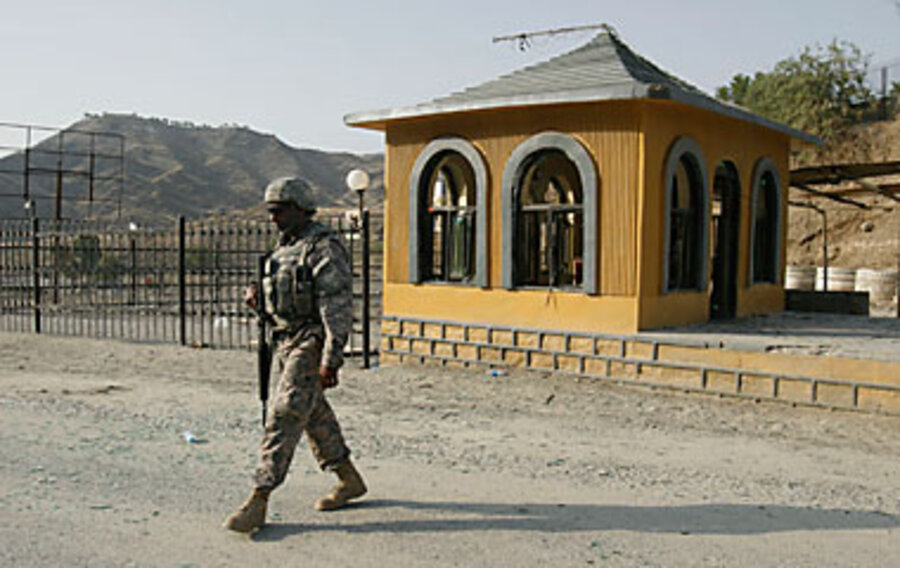What has happened to other captured soldiers?
Loading...
| Washington
The capture of Pfc. Bowe Bergdahl would appear to mark a rare failure of the military's most basic operating procedures.
Military units are designed to provide strength in numbers, normally preventing insurgents from infiltrating a corps of hundreds of men to snatch just one.
It is unclear as yet how Bergdahl was captured, but while American forces in Afghanistan are stretched, they are not outnumbered. There are about 58,000 US service members on the ground, and service members generally operate in such a way that they don't expose themselves to the risk of capture.
Bergdahl was taken June 30 in eastern Afghanistan's Paktika Province, where his unit was operating. A video was released over the weekend, showing a reasonably healthy Bergdahl in local clothing, eating and talking. Bergdahl said he was scared and missed his family as his captors prompted him at different points of the video (read more about that here).
American officials have condemned the kidnapping, saying it is a violation of international law and vowing to find him. The US military is poring over intelligence and scouring the area to find the young soldier, who was on his first deployment. Some media reports say he may have been taken to Pakistan, where finding him would be more difficult.
The military conducts some hostage training, but that is typically reserved for special operators who typically work more autonomously. A young soldier such as Bergdahl would not likely have received much in the way of hostage training because the likelihood of him being kidnapped is so low. When soldiers go "outside the wire" – or off a secure base – they are supposed to operate in groups that would make it almost impossible to be captured.
Soldiers also operate by a code of conduct that forbid them from leaving another behind, so even a small unit operating on a patrol, for example, would not return to base without knowing where each of its members was at all times.
Such captures of American soldiers most typically happen when a unit is ambushed and overrun by insurgents. But in recent years, these cases have all occurred in Iraq. With the exception of one Navy seal who fell out of a helicopter during a battle in Afghanistan, fought back insurgents but then was briefly captured and killed, Bergdahl is the first case of an American servicemember being kidnapped in Afghanistan.
Most cases of captured soldiers have not ended well. Incidents in Iraq include:
•Staff Sgt. Keith Maupin was captured in April 2004 near Baghdad after his convoy came under attack. A video of Maupin being killed surfaced but it wasn't until March 2008 that his remains were found and identified.
•Pfcs. Kristian Menchaca and Thomas Tucker were both captured near Baghdad in June 2006 after their checkpoint was overrun by insurgents. Their bodies were recovered soon after not far from where they were abducted.
•Sgt. Alex Jiminez and Pfc. Byron Fouty were declared missing-captured in June 2007 after being taken south of Baghdad during an attack on their patrol from Al Qaeda. Their remains were found and identified in July 2008.
•The military famously rescued Pvt. Jessica Lynch in southern Iraq in April 2003 from a hospital room in Nasariyah. Her convoy had been ambushed, and she and several others were captured. They were later rescued.





